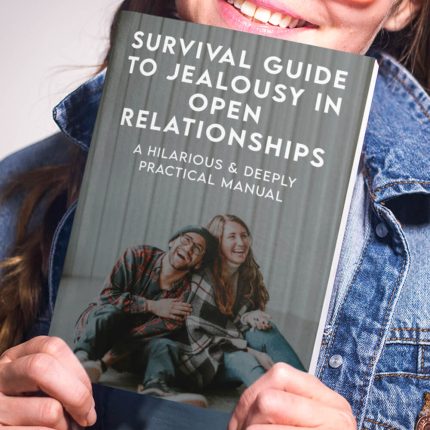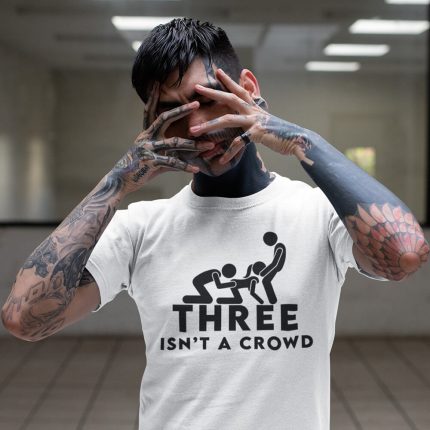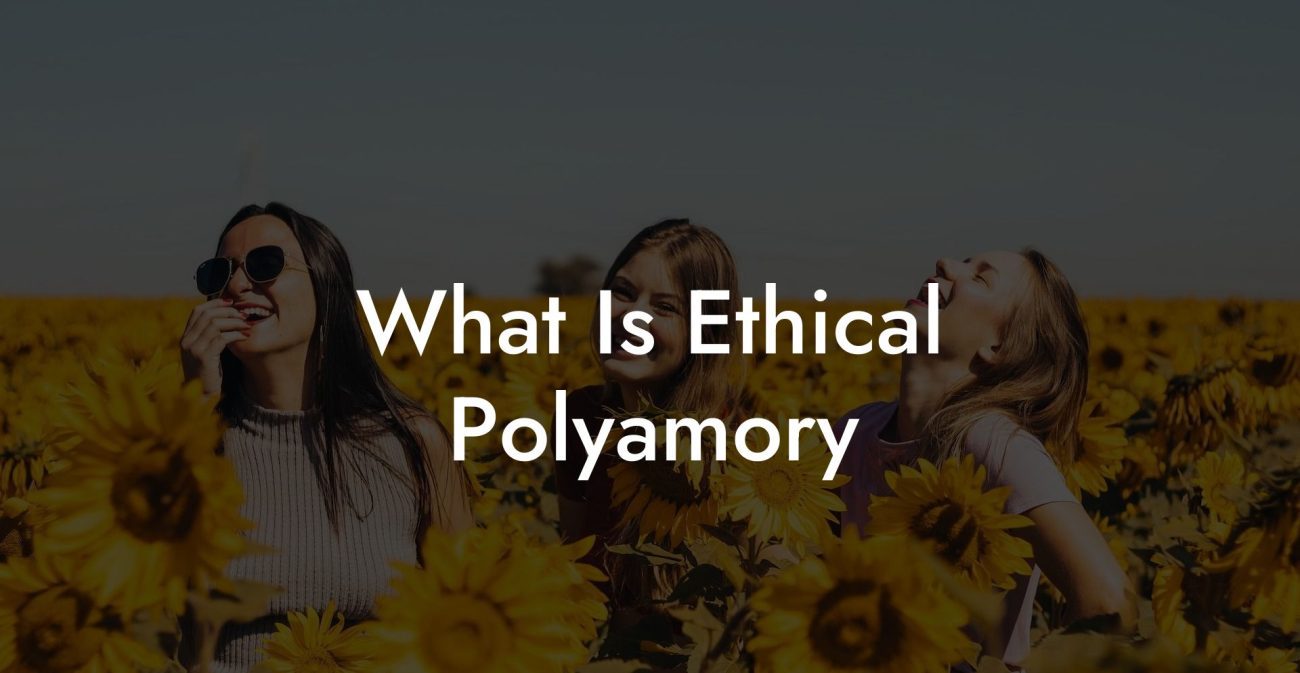Polygamy vs Marriage: Key Differences

This guide delves into the core distinctions between polygamous marriages and traditional (monogamous) marriages by examining their definitions, structures, cultural and historical contexts, legal recognition, ethical considerations, and emotional dynamics. Whether you are a student, researcher, or simply curious about diverse family models, this resource offers in-depth insights and practical strategies to help you understand how polygamy and marriage differ—and what these differences mean for individuals and society.
Have you ever wondered if monogamy is just a stupid little experiment? Open relationships, polyamory, relationship anarchy...find out which relationship dynamic suits you best with our one minute relationship test. See if you are just conforming to "societal norms". Reveal your truth >>
Quick Links to Useful Sections
- Understanding Polygamy
- Definition of Polygamy
- Historical and Cultural Context of Polygamy
- Legal and Ethical Considerations in Polygamy
- Understanding Traditional Marriage (monogamy)
- Definition of Marriage
- Historical and Cultural Evolution of Marriage
- Key Differences Between Polygamy and Traditional Marriage
- Structure and Commitment
- Emotional and Psychological Dynamics
- Legal Recognition and Social Implications
- Communication and Conflict Resolution
- Benefits and Challenges
- Benefits of Polygamous Marriages
- Challenges of Polygamous Marriages
- Benefits of Monogamous Marriages
- Challenges of Monogamous Marriages
- Practical Strategies for Success
- Self-Reflection and Goal Setting
- Develop Effective Communication Skills
- Establish Clear Boundaries
- Prioritize Self-Care and Build a Support Network
- FAQ: Your Polygamous Relationship: Definition & Meaning Questions Answered
Understanding Polygamy
Definition of Polygamy
Polygamy is the practice of having more than one spouse simultaneously. It encompasses various forms of plural marriage and is generally divided into two primary types:
- Polygyny: A form in which one man is married to multiple women. This is the most common type of polygamous arrangement and has been practiced in many cultures worldwide.
- Polyandry: A less common form in which one woman is married to multiple men. Polyandry is traditionally practiced in a few societies where economic or environmental factors—such as limited arable land—make it a pragmatic solution.
Historical and Cultural Context of Polygamy
Polygamy has deep historical roots and has been a prevalent marital model in various societies for thousands of years. In many agrarian and pastoral communities, plural marriages were not only practical but also a symbol of wealth and social status. For instance, in many parts of Africa, the Middle East, and Asia, polygyny was widely practiced to increase a family's labor force and consolidate resources. In contrast, in regions like Tibet, Nepal, and parts of India, polyandry (often fraternal polyandry) helped prevent the fragmentation of family land, ensuring economic stability.
Cultural acceptance of polygamy is deeply intertwined with local customs, religious beliefs, and social structures. In societies where it is customary, polygamy is often regarded as a legitimate and respected institution, integral to the social fabric. However, in many modern Western societies, monogamy is the legally and culturally dominant model, and polygamous practices frequently face legal restrictions and social stigma.
Legal and Ethical Considerations in Polygamy
Legally, most modern systems define marriage as a union between two people. Consequently, polygamous marriages are not recognized under state law in many countries, leading to significant challenges in areas such as inheritance, custody, and spousal benefits. In regions where polygamy is culturally sanctioned, customary or religious laws may provide some form of recognition, but these frameworks often operate alongside—and sometimes in conflict with—national legal standards.
Ethically, polygamy hinges on principles such as informed consent, mutual respect, and transparency. In an ideal polygamous marriage, every spouse enters the relationship voluntarily and is fully aware of the arrangement's structure. Open communication is critical to maintaining fairness and balancing power dynamics among partners. However, historical practices of polygamy have sometimes been criticized for perpetuating gender imbalances, a challenge that contemporary ethical polygamy seeks to address through more equitable practices.
Understanding Traditional Marriage (monogamy)
Definition of Marriage
Traditional marriage, or monogamy, is defined as an exclusive, legally recognized union between two individuals. This model is the most common form of marital arrangement in many parts of the world and is supported by cultural, religious, and legal institutions.
Key characteristics of monogamous marriage include:
EXPLORE OUR ETHICAL NON-MONOGAMY & OPEN RELATIONSHIP SHOP
👨💻👩💻 Digital Store (Instant Download)
🍆💦 Clothing Store (Worldwide Delivery Available)
Real Men Share Pop Art T-Shirt (White)
$29.99Sharing Is Caring Unisex T-Shirt (Black)
$29.99It's Not Cheating If He Watches T-Shirt (Black)
$29.99Sharing Is Caring Daddy Cap (Black)
$39.99Three Isn't a Crowd Unisex T-Shirt (Black)
$29.99Multiple Lovers - Sharing Is Caring Unisex T-Shirt (Black)
$29.99Real Men Share Pop Art T-Shirt (Black)
$29.99I Love Watching Pop Art T-Shirt (White)
$29.99I Love Watching Pop Art T-Shirt (Black)
$29.99Fuck Each Other Not The Planet Unisex T-Shirt (White)
$29.99Three Isn't a Crowd Unisex T-Shirt (White)
$29.99Fuck Each Other Not The Planet Unisex T-Shirt (Black)
$29.99- Exclusivity: Both partners commit to sharing their emotional, romantic, and sexual lives only with each other.
- Long-Term Commitment: Monogamous relationships often involve the intention of a lifelong or long-term bond, frequently formalized through marriage.
- Legal Recognition: Monogamous marriages are recognized by law, providing rights and benefits such as inheritance, tax advantages, custody rights, and spousal benefits.
- Cultural and Social Norms: Social expectations, religious doctrines, and cultural narratives typically reinforce monogamy as the ideal relationship model.
Historical and Cultural Evolution of Marriage
The institution of marriage has evolved over centuries, heavily influenced by religious teachings, legal frameworks, and cultural traditions. In Western societies, for example, Christianity played a pivotal role in establishing monogamous marriage as the standard, with legal systems subsequently codifying this model. The nuclear family has become a central cultural narrative, emphasizing stability, exclusivity, and the continuity of lineage.
Despite its widespread acceptance, some individuals in monogamous marriages find that the exclusivity and singular focus of this model do not fully address all their emotional or sexual needs, prompting interest in alternative forms of relationships.
Key Differences Between Polygamy and Traditional Marriage
Structure and Commitment
Polygamous Marriage: Involves multiple spouses concurrently, creating a complex family structure where roles and responsibilities are divided among several individuals. The commitment in polygamy is multifaceted, with each marital bond potentially varying in its emotional depth, legal status (if any), and social recognition.
Traditional Marriage (Monogamy): Centers on an exclusive bond between two individuals. The commitment is singular and focused, resulting in a straightforward structure where the emotional and practical responsibilities are shared solely between the two partners.
Emotional and Psychological Dynamics
Polygamous Marriages: Offer the possibility of a diverse network of emotional support, with each spouse contributing unique perspectives and strengths. However, this diversity can also lead to emotional complexity, as managing multiple intimate bonds requires advanced communication skills and emotional regulation to address challenges such as jealousy and competition.
Monogamous Marriages: Tend to foster a deep, focused emotional connection between two people, promoting intense intimacy and security. While this exclusivity can strengthen trust and stability, it may also limit the range of emotional support and perspectives available within the relationship.
Legal Recognition and Social Implications
Polygamous Marriages: In most modern legal systems, polygamous marriages are not recognized because marriage is defined as a union between two people. This lack of legal recognition can result in challenges related to inheritance, custody, and spousal benefits. Socially, polygamy may be stigmatized in societies that predominantly endorse monogamy.
Monogamous Marriages: Are widely accepted and legally recognized, providing couples with a range of rights and benefits. The legal and social support for monogamy reinforces its status as the dominant marital model in many parts of the world.
Communication and Conflict Resolution
Polygamous Marriages: Require continuous, multi-directional communication among all spouses. Effective conflict resolution in polygamous settings often demands a high degree of emotional intelligence and the ability to negotiate complex interpersonal dynamics.
Monogamous Marriages: Involve focused, bilateral communication that is generally more straightforward, allowing couples to resolve conflicts directly between the two of them.
Benefits and Challenges
Benefits of Polygamous Marriages
- Diverse Support System: Multiple spouses can provide varied emotional, practical, and financial support, creating a robust network.
- Economic Efficiency: Shared household responsibilities and resource pooling can enhance economic stability.
- Cultural and Social Cohesion: In societies where polygamy is a tradition, plural marriages reinforce cultural identity and social bonds.
- Collaborative Family Dynamics: The combined efforts of multiple spouses can lead to efficient management of household duties and child-rearing responsibilities.
Challenges of Polygamous Marriages
- Legal Limitations: Lack of formal legal recognition often creates complications in inheritance, custody, and spousal benefits.
- Emotional Complexity: Balancing the emotional needs of multiple partners can lead to issues such as jealousy, insecurity, and conflict if boundaries are not clearly defined and maintained.
- Social Stigma: In many modern societies, polygamous marriages face social prejudice and criticism, which can affect the psychological well-being of those involved.
- Power Dynamics: Historical practices of polygamy have sometimes resulted in gender imbalances, and ensuring equitable treatment among spouses remains a challenge in some contexts.
Benefits of Monogamous Marriages
- Simplicity and Clarity: With an exclusive partnership between two people, roles, responsibilities, and expectations are generally straightforward and easy to manage.
- Legal and Social Support: Monogamous marriages are legally recognized and culturally reinforced, providing access to a wide range of rights and benefits.
- Focused Emotional Intimacy: The deep, exclusive bond formed between two partners can lead to strong trust and emotional security.
Challenges of Monogamous Marriages
- Potential for Emotional Stagnation: Over time, the lack of variety in emotional support might lead to feelings of boredom or stagnation.
- Limited Diversity of Perspectives: Relying solely on one partner for emotional, practical, and intellectual support can sometimes leave individual needs unmet.
Practical Strategies for Success
Self-Reflection and Goal Setting
Begin by reflecting on your personal values and what you seek in a marital relationship. Consider whether you value a deep, exclusive bond or prefer a broader network of support. Your goals and lifestyle will guide your choice between a monogamous or polygamous marriage.
Develop Effective Communication Skills
Communication is the cornerstone of any successful relationship. Whether you are in a monogamous or polygamous marriage, establish regular check-ins to discuss feelings, boundaries, and expectations. Using digital tools like shared calendars and group chats can help coordinate schedules and responsibilities.
- Practice active listening and use "I" statements to express your feelings.
- Schedule regular meetings to address any concerns and renegotiate boundaries if needed.
Establish Clear Boundaries
Clearly defining roles and expectations is essential to prevent misunderstandings. In a monogamous marriage, boundaries typically focus on exclusivity and shared responsibilities. In a polygamous marriage, it is crucial to create written or digital agreements that outline financial responsibilities, personal time, and protocols for conflict resolution.
- Create a written agreement that covers key areas such as finances, child-rearing, and household duties.
- Regularly revisit and update these boundaries as circumstances change.
Prioritize Self-Care and Build a Support Network
Your personal well-being is critical to the success of any relationship. Engage in activities that promote your physical, emotional, and mental health. Building a support network, whether through friends, family, or online communities, can provide invaluable assistance and validation.
- Maintain a self-care routine that includes exercise, meditation, or other mindfulness practices.
- Consider professional counseling or therapy to enhance your emotional resilience.
- Join support groups or online forums to connect with others who share your relationship model.
FAQ: Your Polygamous Relationship: Definition & Meaning Questions Answered
1. What does "polygamous relationship" mean?
A polygamous relationship is a marital or committed arrangement in which an individual is involved with more than one spouse simultaneously. This often includes forms such as polygyny (one man with multiple wives) or polyandry (one woman with multiple husbands).
2. How is polygamy different from monogamy?
Polygamy involves multiple spouses and a complex family structure with shared responsibilities and diverse emotional support, whereas monogamy is an exclusive union between two individuals with a focused emotional bond.
3. What are the historical roots of polygamous relationships?
Polygamous relationships have been practiced for thousands of years as practical solutions for economic, social, and environmental challenges. They have been widely used in societies where resource management and family cohesion were critical.
4. What legal challenges do polygamous marriages face?
Since most legal systems define marriage as a union between two people, polygamous marriages are generally not recognized by state law, leading to complications in areas such as inheritance, custody, and spousal benefits.
5. What ethical principles underpin ethical polygamy?
Ethical polygamy is based on informed consent, mutual respect, transparent communication, and equity among all participants, ensuring that each partner voluntarily agrees to the relationship structure and that their rights and needs are respected.
6. Where can I find additional resources on polygamous relationships?
Additional resources include books such as "The Ethical Slut" by Dossie Easton & Janet Hardy and "More Than Two" by Franklin Veaux & Eve Rickert, podcasts like "Multiamory" and "Polyamory Weekly," and online communities such as r/polyamory.
Resources and Community Support: Your Next Steps
- "The Ethical Slut" by Dossie Easton & Janet Hardy – A seminal work that explores various models of consensual non-monogamy, including polygamous relationships.
- "More Than Two" by Franklin Veaux & Eve Rickert – An extensive guide offering practical advice on managing complex relationship dynamics and understanding alternative family structures.
- Podcasts: Tune into "Multiamory" and "Polyamory Weekly" for engaging discussions and personal stories about polygamous and monogamous relationships.
- Online Communities: Join forums such as r/polyamory to share ideas and receive support.
- Workshops and Webinars: Attend events focused on relationship psychology and ethical non-monogamy to expand your knowledge and network with like-minded individuals.
By exploring these resources and applying the strategies outlined in this guide, you can develop a clear, informed understanding of what a polygamous relationship entails and how it compares with traditional monogamous marriage. Embrace continuous learning, open dialogue, and self-reflection as you explore the diverse landscape of alternative marital arrangements.
EXPLORE OUR ETHICAL NON-MONOGAMY & OPEN RELATIONSHIP SHOP
👨💻👩💻 Digital Store (Instant Download)
🍆💦 Clothing Store (Worldwide Delivery Available)
Three Isn't a Crowd Unisex T-Shirt (White)
$29.99Multiple Lovers - Sharing Is Caring Unisex T-Shirt (Black)
$29.99I Love Watching Pop Art T-Shirt (Black)
$29.99Fuck Each Other Not The Planet Unisex T-Shirt (White)
$29.99Three Isn't a Crowd Unisex T-Shirt (Black)
$29.99Sharing Is Caring Daddy Cap (Black)
$39.99I Love Watching Pop Art T-Shirt (White)
$29.99Sharing Is Caring Unisex T-Shirt (Black)
$29.99Real Men Share Pop Art T-Shirt (White)
$29.99Real Men Share Pop Art T-Shirt (Black)
$29.99Fuck Each Other Not The Planet Unisex T-Shirt (Black)
$29.99It's Not Cheating If He Watches T-Shirt (Black)
$29.99Lost & confused by all of the terms, types and seemingly made up 3 letter acronyms?? We've got you. Check out our Ethnical Non-Monogamy Dictionary >>
Useful Interruption: Not sure which relationship vibe fits you best? Take our Relationship Test, it’ll give you the real insight into your natural relationship style. Then, dive into our binge-worthy guides (from the tried-and-true to the “wait, that’s a thing?”) and find the perfect relationship type for your life:
- Monogamy
- Open Relationships
- Ethical Non-Monogamy
- Solo Polyamory
- Non-Hierarchical Polyamory
- Hierarchical Polyamory
- Relationship Anarchy
- Swinging
Now back to the main article but yeah take the test...

































